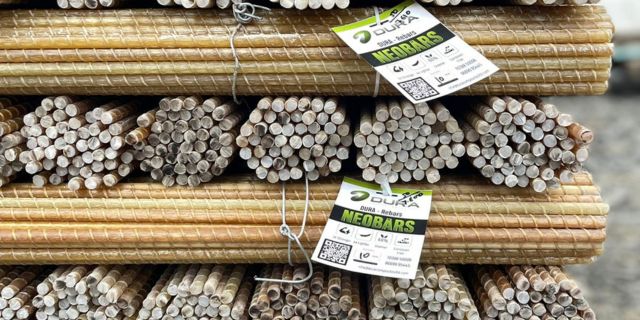Infrastructure development is a cornerstone of progress, and the materials used in construction play a crucial role in ensuring durability and efficiency. These innovative materials are gradually replacing traditional steel rebars due to their superior performance and cost-effectiveness. If you are exploring cutting-edge construction solutions, Composite rebars in Nagpur have emerged as a key player in transforming modern infrastructure.
Understanding Composite Rebars
Composite rebars, often made from Glass Fiber Reinforced Polymer (GFRP), are a type of reinforcement bar designed to provide superior strength and longevity compared to traditional steel rebars. Additionally, it is highly cost-efficient and has a long lifespan. The most important advantage is its corrosion resistance. The continuously growing demand for durable, cost-efficient, and sustainable materials is one of the reasons for the fiberglass rebar market expansion.
Advantages of Composite Rebars
1. Corrosion Resistance
One of the most significant advantages of composite rebars is their resistance to corrosion. GFRP manufacturing has a lower carbon footprint because it requires less energy than steel production.
2. Lightweight Yet Strong
Composite rebars are significantly lighter than steel rebars, making them easier to handle and transport. GFRP manufacturing has a lower carbon footprint because it requires less energy than steel production.
3. Longevity and Durability
Due to their corrosion resistance and high tensile strength, composite rebars contribute to the longevity of structures. They reduce the need for frequent maintenance and repairs, saving time and resources over the long term. In many cases, they are still suitable materials for many buildings or structures – but steel is not the best reinforcement when there is corrosion risk.
4. Thermal and Electrical Insulation
Unlike steel, composite rebars are non-conductive, providing excellent thermal and electrical insulation. When steel corrodes it expands, causing concrete spalling. Repair and replacement lead to higher cement production. This makes them a preferred choice for specialized projects like electrical substations and high-tech facilities.
5. Cost-Effectiveness
While the initial cost of composite rebars might be higher than steel, the long-term savings on maintenance and repairs make them a cost-effective solution for infrastructure projects. compressive strength, good durability and low cost.
Applications of Composite Rebars in Modern Infrastructure
Composite rebars are revolutionizing various sectors of infrastructure, including:
1. Bridges and Flyovers
The high strength-to-weight ratio and corrosion resistance of composite rebars make them ideal for constructing bridges and flyovers. However, its well- known Achilles’ heel is its brittleness and limited tensile strength. These structures require materials that can withstand heavy loads and harsh environmental conditions over decades.
2. Marine Structures
In coastal areas, marine structures such as piers, docks, and seawalls are constantly exposed to saltwater, leading to steel corrosion. This was solved quite handily about a century ago by using reinforcing bars (rebar) of steel in the tension side of concrete structures. Composite rebars eliminate this concern, ensuring the longevity of such structures.
3. Roads and Highways
Roads and highways in cities like Nagpur, which experience extreme weather variations, can benefit from the durability of composite rebars. This necessitates costly repair and maintenance and, if allowed to progress far enough, it can compromise the structure’s integrity.
4. Tunnels and Underground Structures
Numerous coatings and penetrants have been introduced over the decades to help seal out moisture from concrete, and rebar itself has been upgraded with epoxy coatings or the use of stainless steel.
5. Industrial and Power Plants
As it corrodes, steel rebar swells and increases the tensile load on the concrete, which begins to crack and spall, creating openings that lead to further and faster deterioration of the steel and concrete.
Why Choose Composite Rebars in Nagpur?
Nagpur is rapidly evolving as a hub for infrastructure development in central India. Composite rebars are a substitute for the conventional steel rebars, which are used to provide a non-corrosive reinforcement to concrete and add service life to it.
Enhanced durability for long-lasting structures.
Cost-effective solutions for both small and large-scale projects.
Environment-friendly alternatives to traditional steel rebars, contributing to sustainable development.
Challenges and Future Prospects
While composite rebars are revolutionizing the construction industry, they are not without challenges. The higher upfront cost and lack of widespread awareness can deter some builders from adopting this material.
The future of composite rebars looks promising, with ongoing advancements in material science. The swiftly increasing demand for quality construction and the ever-increasing infrastructural development are anticipated to be the key factors driving the industry’s development.
Conclusion
Composite rebars are undoubtedly transforming modern infrastructure with their unparalleled benefits, from corrosion resistance to cost-effectiveness. The specific resistance of composites is greater compared to steel; the tensile strength of the GFRP rebar is twice that of the steel rebar of the same diameter.

